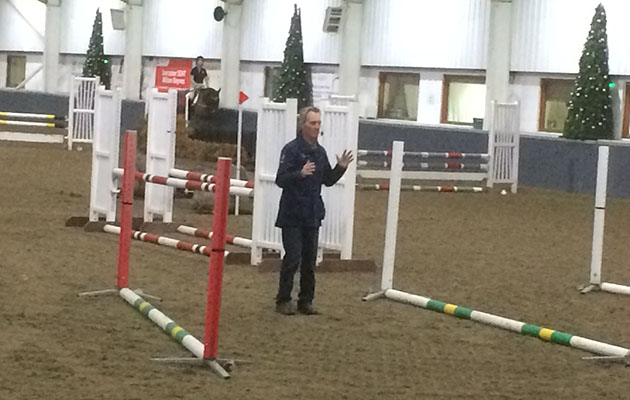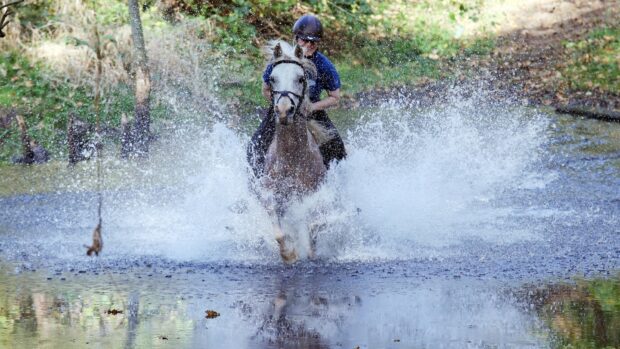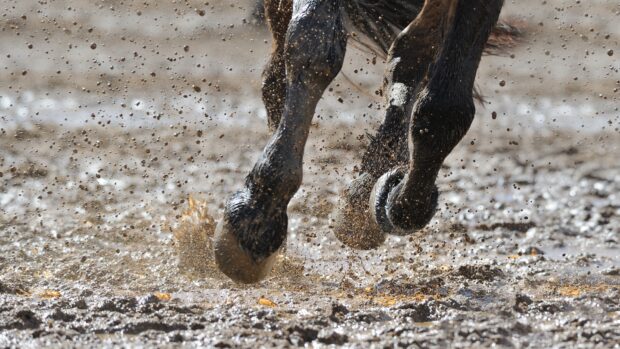Current British eventing team performance coach, Chris Bartle, believes that the rider’s position is key to successful cross-country, as only when the rider is in balance, can the horse perform to their best.
During a masterclass organised by the British Eventing Charitable Foundation at Keysoe in Bedfordshire recently he shared these useful tips that every event rider can benefit from.
Perfect your cross-country position
The rider’s position is key. Riders need to move as little as possible over a jump so they don’t affect the horse’s balance or concentration.
The rider should always be looking up and ahead. When jumping a combination look towards the second element before you jump the first. This helps the horse understand the question.
Riders should not need to look down. “Humans have huge lateral vision. You need to train your lateral vision so you don’t need to look down to see the fence/ground poles. Always look ahead ‘down the road’,” explains Chris.
By keeping their eyes focussed ahead, this helps the rider keep their head up which in turns helps prevent the upper body from tipping forward. If the rider gets ahead of the horse’s bascule on the approach/take off stride this can cause the horse to have front rails off oxers in the showjumping.
The rider must have the weight down through the knee into the heel on the landing so they don’t tip forwards. This is key in combination fences as if the rider ‘dips’ on landing they may lose the line or affect the horse’s balance. The rider’s eyes need to keep looking ‘down the road’ to the next jump or the route away from the fence.
The rider’s hands should stay down around the horse’s wither – many riders need to learn to be comfortable jumping with longer reins, which allows the horse to use its neck over the fence to develop greater scope and also prevents the horse from pulling the rider forward on landing.
The rider should use their body language/position to help control the horse’s speed, instead of always using the rein to slow down. Bring the upper body more upright and hold through the core to steady to the horse without giving them a reason to fight the hand. Use half halts within the horse’s natural rhythm of the pace.
Riders should practise the “what if” position. This puts the rider slightly behind the horse’s sense of gravity so they are positioned to support the horse if something goes wrong like the horse spooks at a fence or catches a front leg.
Chris shared these tips during a masterclass organised by the British Eventing Charitable Foundation at Keysoe in Bedfordshire (21 November). Chris will be running another masterclass at Kingston Maurward College in Dorset during the evening of Monday 4 December.




